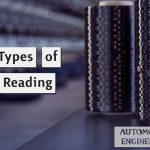What it is
- Brown (1989) explains that intensive reading “calls attention to grammatical forms, discourse markers, and other surface structure details for the purpose of understanding literal meaning, implications, rhetorical relationships, and the like.” He draws an analogy to intensive reading as a “zoom lens” strategy .
- Long and Richards (1987) say it is a “detailed in-class” analysis, led by the teacher, of vocabulary and grammar points, in a short passage.”
- Intensive Reading, sometimes called “Narrow Reading”, may involve students reading selections by the same author or several texts about the same topic. When this occurs, content and grammatical structures repeat themselves and students get many opportunities to understand the meanings of the text. The success of “Narrow Reading” on improving reading comprehension is based on the premise that the more familiar the reader is with the text, either due to the subject matter or having read other works by the same author, the more comprehension is promoted.
How it looks
Characteristics:
- usually classroom based
- reader is intensely involved in looking inside the text
- students focus on linguistic or semantic details of a reading
- students focus on surface structure details such as grammar and discourse markers
- students identify key vocabulary
- students may draw pictures to aid them (such as in problem solving)
- texts are read carefully and thoroughly, again and again
- aim is to build more language knowledge rather than simply practice the skill of reading
- seen more commonly than extensive reading in classrooms
Materials:
- usually very short texts – not more than 500 words in length
- chosen for level of difficulty and usually, by the teacher
- chosen to provide the types of reading and skills that the teacher wants to cover in the course
Skills developed:
- rapid reading practice
- interpreting text by using:
-word attack skills
-text attack skills
-non-text information
Activities:
Intensive reading exercises may include:
- looking at main ideas versus details
- understanding what is implied versus stated
- making inferences
- looking at the order of information and how it effects the message
- identifying words that connect one idea to another
- identifying words that indicate change from one section to another
Munby (1979) suggests four categories of questions that may be used in intensive reading. These include:
- Plain Sense – to understand the factual, exact surface meanings in the text
- Implications – to make inferences and become sensitive to emotional tone and figurative language
- Relationships of thought – between sentences or paragraphs
- Projective – requiring the integration of information from the text to one’s own background information
Note that questions may fall into more than one category.
.
Assessment:
Assessment of intensive reading will take the form of reading tests and quizzes.
The most common systems of questioning are multiple-choice and free-response.
Mackay (1968) , in his book Reading in a Second Language, reminds teachers that the most important objective in the reading class should NOT be the testing of the student to see if they have understood. Teachers should, instead, be spending most of the time training the student to understand what they read.
When it is used
- when the objective of reading is to achieve full understanding of:
– logical argument
– rhetorical pattern of text
– emotional, symbolic or social attitudes and purposes of the author
– linguistic means to an end
- for study of content material that are difficult
Role of the teacher
- The teacher chooses suitable text.
- The teacher chooses tasks and activities to develop skills.
- The teacher gives direction before, during and after reading.
- The teacher prepares students to work on their own. Often the most difficult part is for the teacher to “get out of the way” .
- The teacher encourages students through prompts, without giving answers.
Advantages
- It provides a base to study structure, vocabulary and idioms.
- It provides a base for students to develop a greater control of language
- It provides for a check on the degree of comprehension for individual students
Disadvantages
- There is little actual practice of reading because of the small amount of text.
- In a class with multi-reading abilities, students may not be able to read at their own level because everyone in the class is reading the same material.
- The text may or may not interest the reader because it was chosen by the teacher.
- There is little chance to learn language patterns due to the small amount of text.
- Because exercises and assessment usually follow intensive reading, students may come to associate reading with testing and not pleasure.


